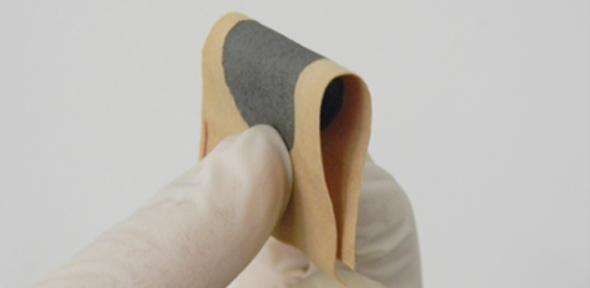Environmentally-friendly graphene textiles could enable wearable electronics

Wearable, textiles-based electronics present new possibilities for flexible circuits, healthcare and environment monitoring, energy conversion, and many others. Now, researchers at the Cambridge Graphene Centre (CGC) at the University of Cambridge, working in collaboration with scientists at Jiangnan University, China, have devised a method for depositing graphene-based inks onto cotton to produce a conductive textile. The work, published in the journal Carbon, demonstrates a wearable motion sensor based on the conductive cotton.
Cotton fabric is among the most widespread for use in clothing and textiles, as it is breathable and comfortable to wear, as well as being durable to washing. These properties also make it an excellent choice for textile electronics. A new process, developed by Dr Felice Torrisi at the CGC, and his collaborators, is a low-cost, sustainable and environmentally-friendly method for making conductive cotton textiles by impregnating them with a graphene-based conductive ink.
Based on Dr Torrisi's work on the formulation of printable graphene inks for flexible electronics, the team created inks of chemically modified graphene flakes that are more adhesive to cotton fibres than unmodified graphene. Heat treatment after depositing the ink on the fabric improves the conductivity of the modified graphene. The adhesion of the modified graphene to the cotton fibre is similar to the way cotton holds coloured dyes, and allows the fabric to remain conductive after several washes.
Although numerous researchers around the world have developed wearable sensors, most of the current wearable technologies rely on rigid electronic components mounted on flexible materials such as plastic films or textiles. These offer limited compatibility with the skin in many circumstances, are damaged when washed and are uncomfortable to wear because they are not breathable.
"Other conductive inks are made from precious metals such as silver, which makes them very expensive to produce and not sustainable, whereas graphene is both cheap, environmentally-friendly, and chemically compatible with cotton," explains Dr Torrisi.


